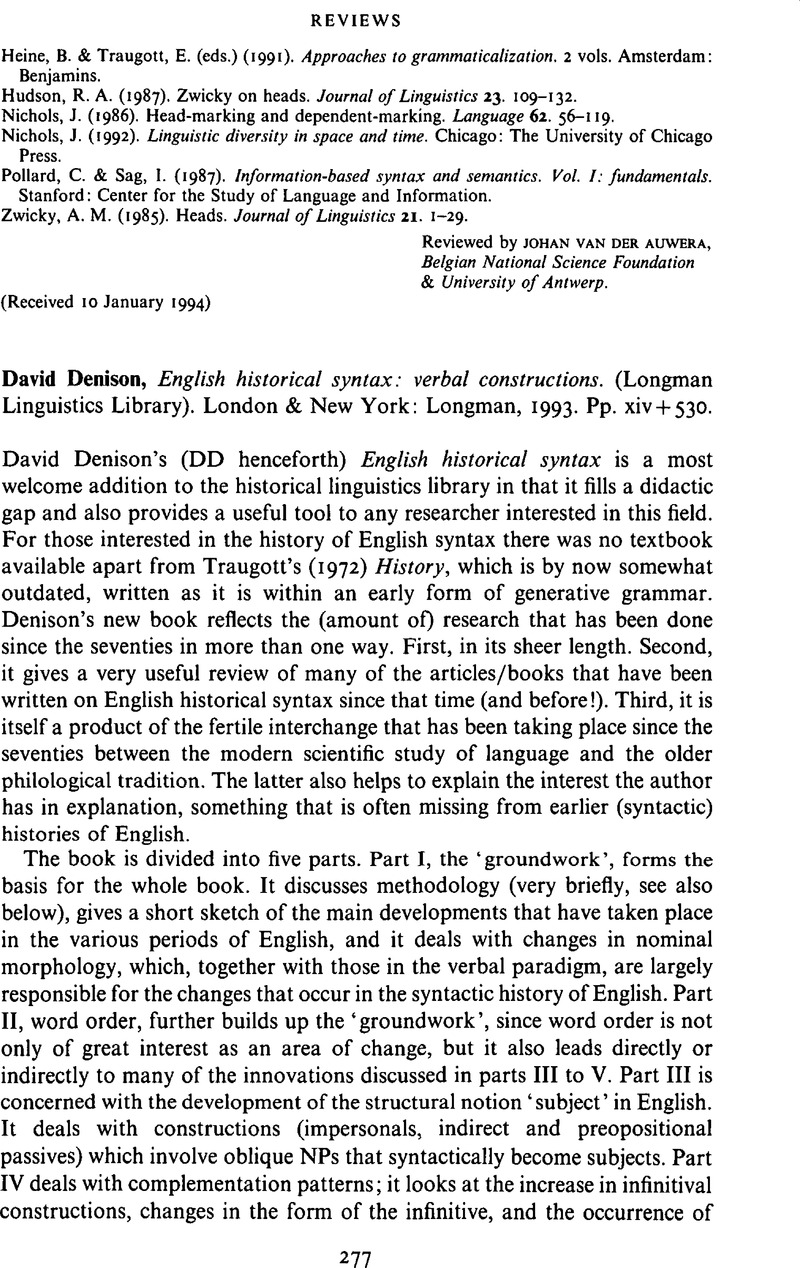No CrossRef data available.
Article contents
David Denison, English historical syntax: verbal constructions. (Longman Linguistics Library). London & New York: Longman, 1993. Pp. xiv + 530.
Review products
David Denison, English historical syntax: verbal constructions. (Longman Linguistics Library). London & New York: Longman, 1993. Pp. xiv + 530.
Published online by Cambridge University Press: 28 November 2008
Abstract
An abstract is not available for this content so a preview has been provided. Please use the Get access link above for information on how to access this content.

- Type
- Reviews
- Information
- Copyright
- Copyright © Cambridge University Press 1994
References
Ard, W. J. (1977). Raising and word order in diachronic syntax. Ph.D. dissertation, UCLA, (1975). Bloomington, IN: Indiana University Linguistics Club.Google Scholar
Clark, R. & Roberts, I. (1993). A computational model of language learnability and language change. Linguistic Inquiry 24. 299–345.Google Scholar
Fischer, O. C. M. (in press). New directions in English historical grammar. To appear in Neophilologus 78.Google Scholar
Fischer, O. C. M. & Leek, F. C. van der (1983). The demise of the Old English impersonal construction. Journal of Linguistics 19. 337–368.Google Scholar
Kemenade, A. van (1992). Structural factors in the history of English modals. In Rissanen, M. et al. (eds.) History of Englishes. Berlin: Mouton de Gruyter. 287–309.Google Scholar
Koopman, W. F. (1992). The distribution of verb forms in Old English subordinate clauses. In Rissanen, M. et al. (eds.) History of Englishes. Berlin: Mouton de Gruyter. 319–35.CrossRefGoogle Scholar
Lightfoot, D. W. (1991). How to set parameters. Arguments from language change. Cambridge, MA: MIT Press.Google Scholar
Zimmermann, R. (1968). Untersuchungen zum Frühmittelenglischen Tempussystem. Heidelberg: Julius Groos.Google Scholar


